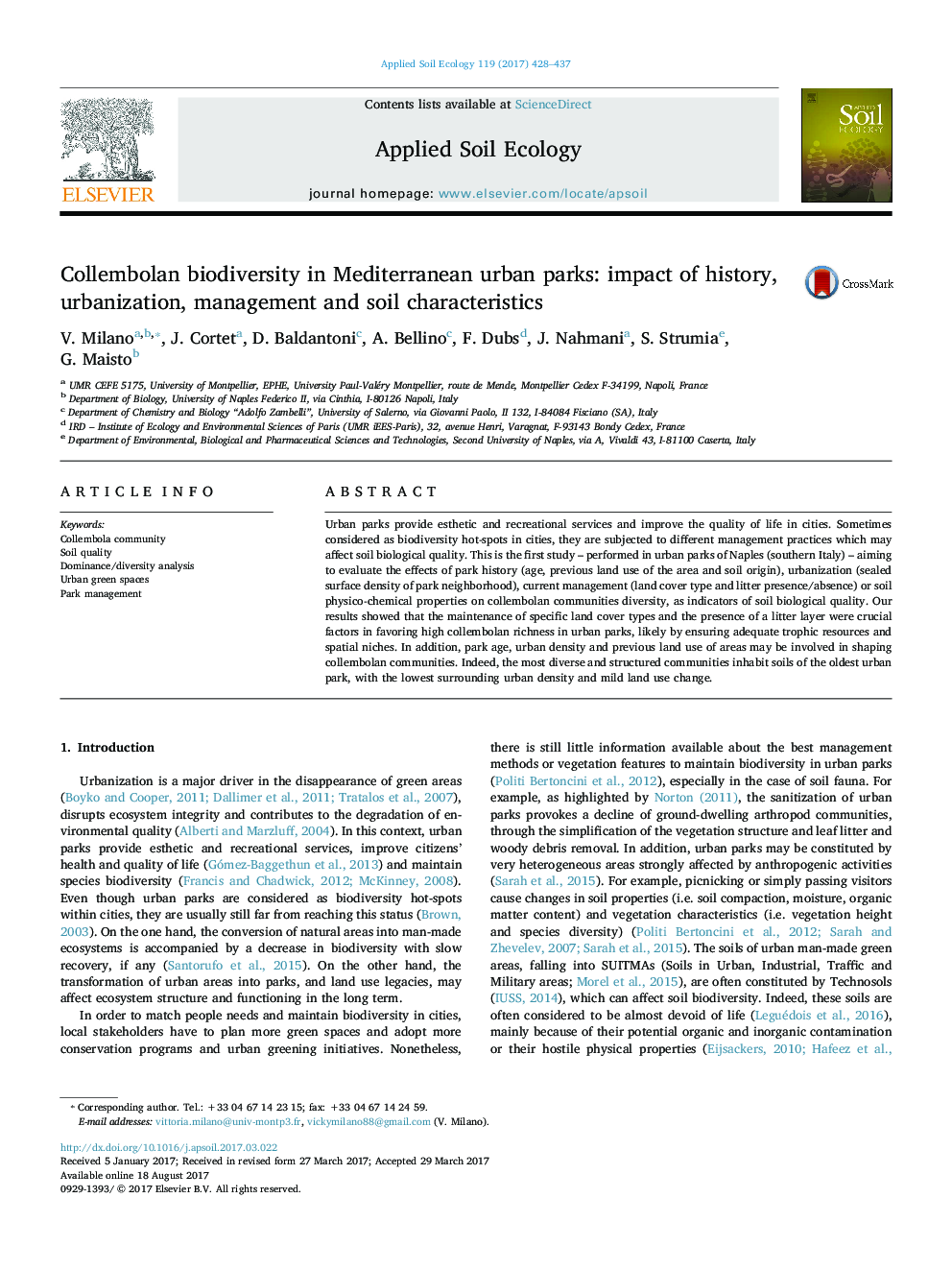| Article ID | Journal | Published Year | Pages | File Type |
|---|---|---|---|---|
| 5742648 | Applied Soil Ecology | 2017 | 10 Pages |
â¢Canopy cover and litter presence modify the structure of collembolan communities.â¢Soil metal concentrations do not impact collembolan communities.â¢The Whittaker's curves show more complex communities in the oldest parks.
Urban parks provide esthetic and recreational services and improve the quality of life in cities. Sometimes considered as biodiversity hot-spots in cities, they are subjected to different management practices which may affect soil biological quality. This is the first study - performed in urban parks of Naples (southern Italy) - aiming to evaluate the effects of park history (age, previous land use of the area and soil origin), urbanization (sealed surface density of park neighborhood), current management (land cover type and litter presence/absence) or soil physico-chemical properties on collembolan communities diversity, as indicators of soil biological quality. Our results showed that the maintenance of specific land cover types and the presence of a litter layer were crucial factors in favoring high collembolan richness in urban parks, likely by ensuring adequate trophic resources and spatial niches. In addition, park age, urban density and previous land use of areas may be involved in shaping collembolan communities. Indeed, the most diverse and structured communities inhabit soils of the oldest urban park, with the lowest surrounding urban density and mild land use change.
